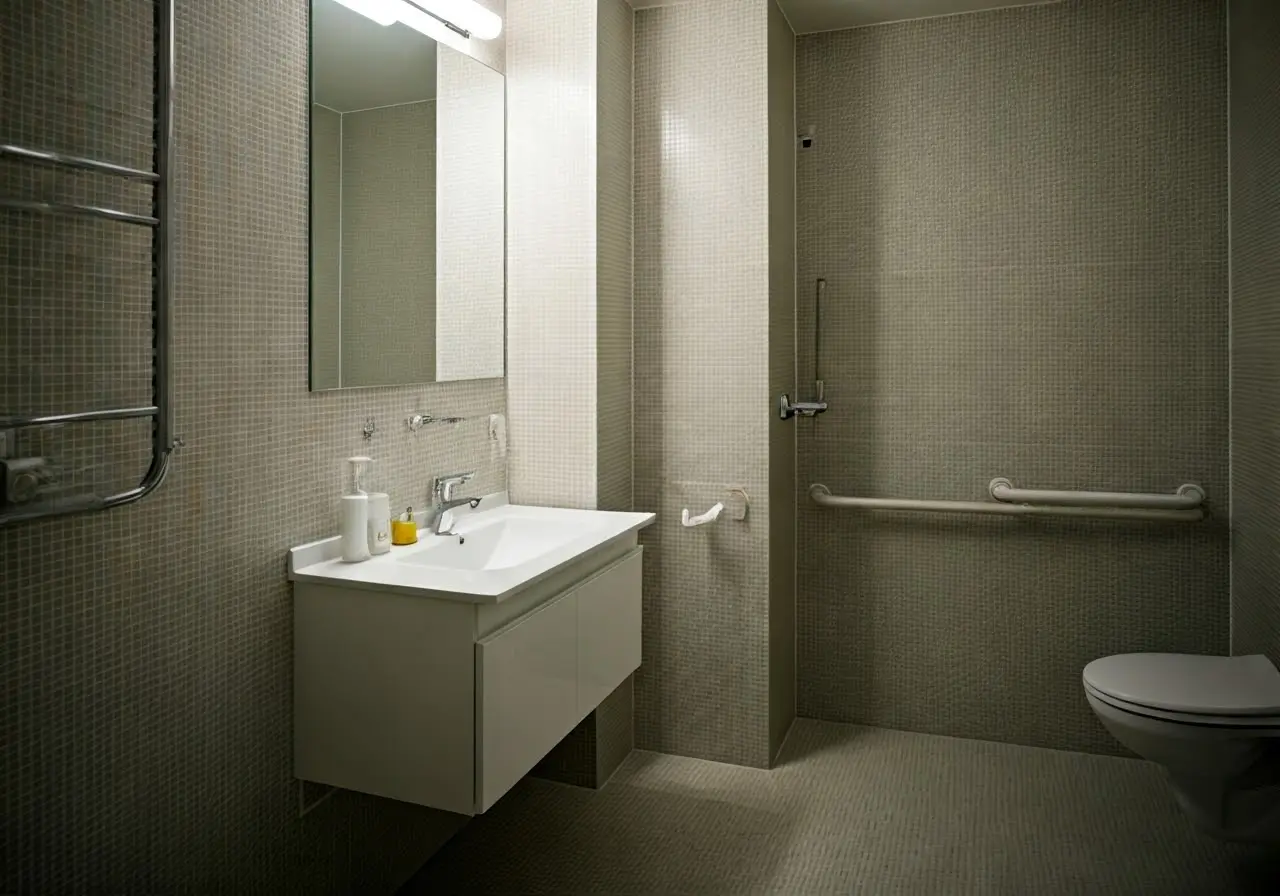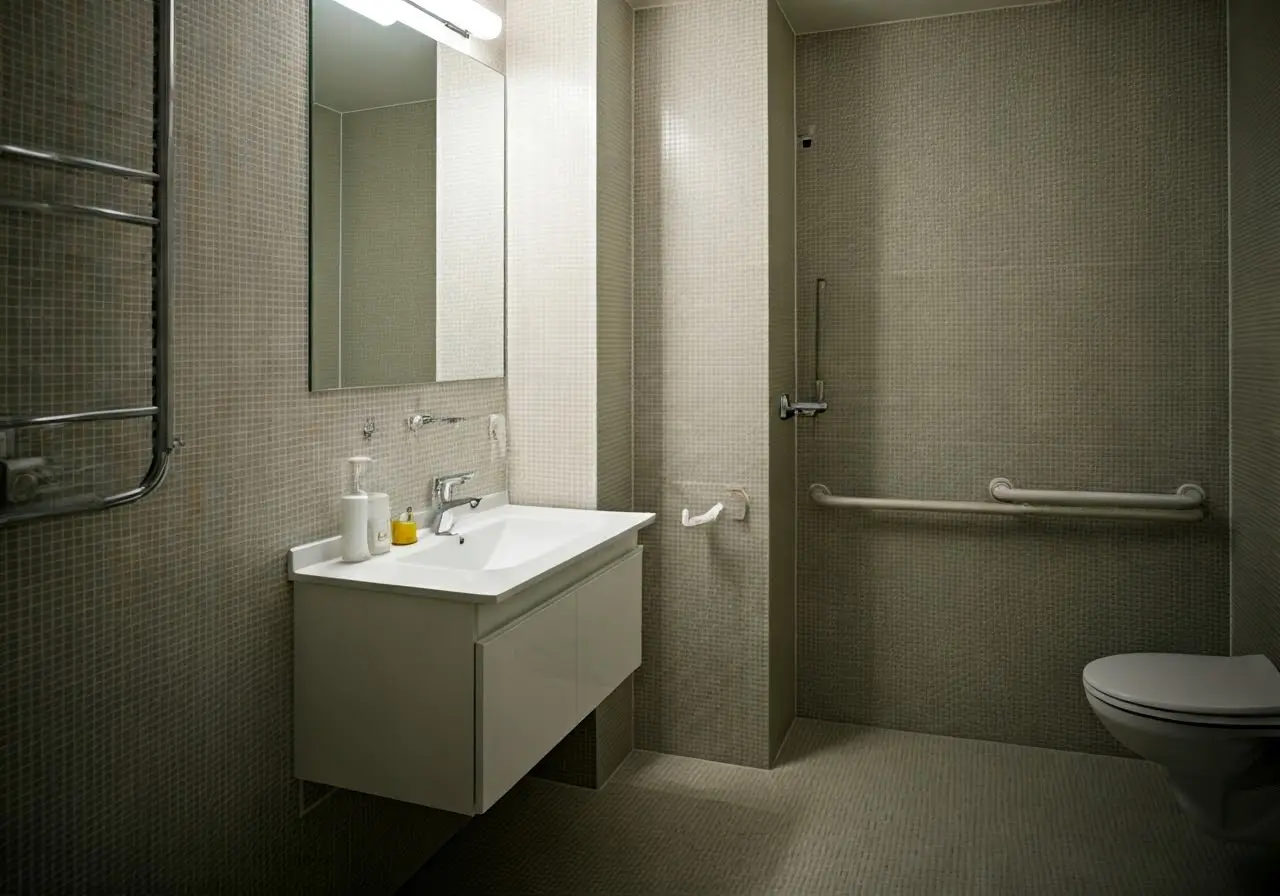As we age, certain everyday tasks can become more challenging, and using the bathroom is no exception. Ensuring safety and comfort in this essential room can dramatically improve the quality of life for elderly individuals. In this guide, we’ll explore easy-to-implement adaptations that can make every trip to the bathroom safer and more comfortable.
1. Secure Grab Bars for Support
One of the simplest yet most effective changes is installing grab bars. These provide essential support for balance and can help prevent falls. Place them near the toilet and bath for maximum effectiveness. When installed correctly, grab bars offer a reliable anchor point, allowing seniors to steady themselves during movements, thereby reducing the risk of slips and falls. The strategic placement of these bars, such as near the shower entrance and alongside the bathtub, provides multiple support points for greater safety. For those handling caregiving duties, the presence of grab bars can also ease the physical strain required to assist elderly individuals in moving around the bathroom.
Grab bars come in a variety of materials and designs, which can also add an aesthetic element to the bathroom. Options like brushed stainless steel or finishes that match existing fixtures can enhance both function and form. Moreover, installing grab bars is often a straightforward process that can be done by a professional, ensuring that they are securely mounted to withstand pressure. When considering styles, it’s important to choose ones that are slip-resistant for added security. The investment in grab bars not only improves safety but also allows seniors to retain a degree of autonomy in their daily routines.
2. Raised Toilet Seats for Easy Access
A raised toilet seat can make it easier for seniors to sit and stand. This adaptation reduces strain on the knees and lower back, promoting independence and comfort. Available in various heights, these seats can be selected based on individual needs to ensure maximum comfort and accessibility. For those managing arthritis or mobility issues, the reduction in effort to use the toilet can significantly reduce daily discomfort. An additional benefit of raised toilet seats is their ability to be easily installed and removed, making them a versatile choice for homes shared with multiple generations.
Some raised toilet seats come with armrests that provide additional support, further assisting in safe transfers to and from the toilet. This feature can be especially beneficial for those with balance issues, offering a stabilizing hold that prevents falls. It’s worth considering styles that are equipped with locking mechanisms to ensure they stay securely in place. By implementing this change, family members can have greater peace of mind knowing their loved one is using the restroom securely. Don’t forget to check local programs for potential financial assistance on such adaptations.
3. Non-Slip Mats to Prevent Falls
Slippery surfaces are a common hazard in bathrooms. Non-slip mats are an affordable way to minimize the risk of accidental falls, offering peace of mind with each step. Whether placed inside the shower or in front of the sink, these mats provide an extra layer of safety by reducing slips. Available in numerous textures and styles, non-slip mats can be chosen to complement the existing décor while ensuring the highest possible safety standards.
Enhanced by a textured surface, non-slip mats create friction, even when wet, ensuring that feet remain firmly planted. Custom-fit designs are available that cover the entire floor space of showers, adding comprehensive protection against falls. Additionally, for those who want a seamless look and feel, non-slip clear tapes can be installed directly onto tiles, maintaining a polished look while still offering essential anti-slip properties. Investing in these small changes pays substantial dividends by significantly decreasing the risk of falls, which are a leading cause of injury among the elderly.
4. Handheld Shower Heads for Flexibility
Handheld shower heads add versatility and ease to bathing. They allow for seated showers and reduce the need for reaching, making the bathing process safer and more comfortable. Thanks to their adjustable nature, these shower heads enable personalized bathing experiences, catering to various needs and preferences. The flexible hose allows caregivers to assist more efficiently, directing water flow precisely where it’s needed without causing strain or discomfort to the user.
When considering this addition, options with different spray settings can provide gentle massage or rinsing experiences, enhancing the comfort during showers. Further, installing a sprayer attachment can support those who prefer to bathe independently, maintaining hygiene without the risk of standing. Handheld units typically come with convenient mounts, allowing the shower head to be stored at varying heights to suit the user, which is particularly beneficial for those with wheelchair access needs.
5. Shower Chairs for Comfort and Safety
A shower chair can be a game-changer, offering stability and reducing the risk of slip-related injuries. It provides a comfortable seat during showers, especially beneficial for those with limited mobility. Ensuring the chair is made from durable materials that resist water damage is crucial for safety and longevity. Many shower chairs come with adjustable feet to level them on uneven shower floors, adding an additional layer of security during use.
Consider chairs with backrests and arm support for maximum comfort and safety. For instance, options like ones with a cut-out design can also aid in personal hygiene while seated. The introduction of shower chairs not only provides support but also fosters a more independent bathroom routine for those who might otherwise require assistance. By allowing elderly individuals to manage their bathing needs with reduced risk, shower chairs can significantly enhance one’s confidence and dignity during personal care.
6. Lever-Style Faucets for Ease of Use
Replacing traditional faucets with lever-style designs can significantly reduce the effort needed to adjust water flow and temperature. This adaptation is particularly helpful for individuals with arthritis or limited hand strength. Easy to maneuver with a minimal grip, these faucets simplify tasks that are typically strenuous for the elderly, enabling them to maintain independence when using the bathroom sink.
The sleek, simple design of lever faucets allows for precise control over water temperature, ensuring comfort and safety every time they’re used. For those seeking innovation, motion-sensor faucets offer touchless operation, providing hygiene benefits by minimizing the spread of germs. When selecting new faucets, it’s also wise to consider options like lever faucets that match the overall bathroom aesthetic, ensuring both functionality and style.
7. Adequate Lighting for Improved Visibility
Good lighting is crucial for safely navigating the bathroom, especially at night. Consider adding motion-sensor lights or nightlights to illuminate paths, reducing the likelihood of accidents. These lights activate only when movement is detected, providing efficient lighting without consuming unnecessary energy. This ensures that, even if glasses are not immediately accessible, users are less likely to trip or fall during the night.
Adequate lighting not only increases safety but can also offer a calming ambiance that enhances the overall bathroom experience. For those with visual impairments, extra task lighting around mirrors and toiletries can facilitate grooming tasks with greater ease. Opting for LED lights ensures long-lasting, energy-efficient illumination, making them an economical choice in the long run. Thoughtfully placed lighting fixtures, combined with thoughtful design, can greatly improve an elderly individual’s ability to independently and safely navigate their bathroom environment at all hours.










